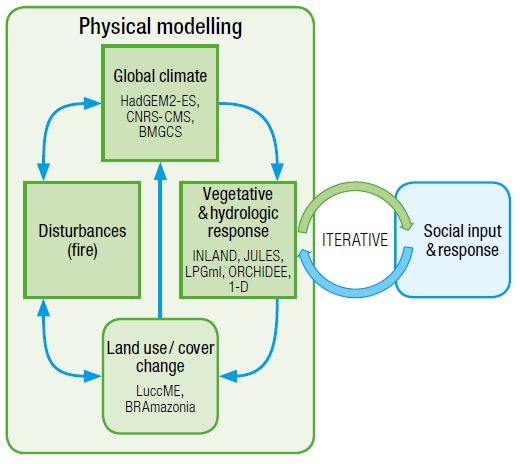About AMAZALERT
AMAZALERT examined how global and regional climate and land-use changes will impact Amazonian forests, agriculture, waters, and people; and how these impacts feed back onto climate.
“The AMAZALERT project has received funding from the European Union’s Seventh Framework Programme for research, technological development and demonstration under grant agreement no 282664, and was co-funded by many national agencies an institutes.”
Objectives
The AMAZALERT team brings together experts from 14 research institutes in nine countries, including five in Amazon nations. These experts will:
- Identify the ecosystem services most important to stakeholders in the Amazon Basin and beyond. Stakeholders are brought into AMAZALERT from the project start. They are consulted to determine critical ecosystem services and to provide insight into the interplay between policies and socio-economic dynamics.

- Integrate modelling of the interactions between societal and natural contributors to land use and cover.
Policies and socio-economic forces will form inputs into biophysical modelling and results of biophysical models will be used to assess suitability of policies and impacts on socio-economic development.
- Significantly improve modelling and understanding of the complex interactions between natural systems, as well as understanding of impacts on these systems caused by socio-economic forces, including policies and programs.
Test, calibrate and develop vegetation models; increase knowledge of underlying processes; and improve understanding of the feed-backs between vegetation, hydrological processes, global and local climate, fire and land cover changes.
- Respond to the urgent need, expressed by the international community, to develop a tool to warn of imminent, irreversible loss of ecosystem services.
Using the results of coupled models, data sets and other indicators, we will develop a ‘blueprint’ for an Early Warning System.

